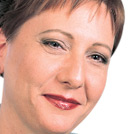We buyers have no problem buying beautiful jewelry. Between the appreciation of great design and the thrill of the hunt, it is an exciting task. But before you start purchasing, the left brain needs to kick in and you need to dive into reports to build a foundation for your buy plan. Look at what percentage of your total inventory is over 12 months old. That is your report card on buying in the past.[
Next step is to review your strategic plan and your merchandising plan to remind yourself of your objectives.
If you don’t have a plan, brainstorm with your staff on unclosed sales and missed opportunities. Remember, new purchasing should be about closing more sales.
Getting the right mix requires inspiration and hard analysis.

We buyers have no problem buying beautiful jewelry. Between the appreciation of great design and the thrill of the hunt, it is an exciting task. But before you start purchasing, the left brain needs to kick in and you need to dive into reports to build a foundation for your buy plan. Look at what percentage of your total inventory is over 12 months old. That is your report card on buying in the past.
Next step is to review your strategic plan and your merchandising plan to remind yourself of your objectives.
Advertisement
If you don’t have a plan, brainstorm with your staff on unclosed sales and missed opportunities. Remember, new purchasing should be about closing more sales.
Then, ask yourself the following:
- What is my open-to-buy dollars by classification of product?
- What am I trying to accomplish in that particular department — to close sales, build profitability, increase my average sale?
- What should the product look like?
- What price-point range do I need to fill?
It is critical not to use all your dollars for new and then not be able to fund your fast sellers.
Another source of information is your top vendors. Call and ask about what other retailers are having success with. Or, have them send you pictures and prices of their 25 top-selling styles.
Once you have your open to buy by classification make sure that you allocate a percentage to replenishment. It should be at least 25 percent, but could be as much as 50 percent. It is critical not to use all your dollars for new and then not be able to fund your fast sellers. You will also need to put aside dollars for pending accounts payable, consignment sales, and other similar financial obligations.
Now you will want to get very specific. If you have determined a need for bridal semi mounts — drill down in your reports — what metal, shape melee, head shape/size, price-point range? Then, within that classification what price points do you need to hit? So, an item on your buy plan might be: semi-mounts in platinum, with round pavé melee, three-quarter-carat princess head at a cost of $1,200 to $1,500.
Advertisement
Also, remember that new does not have to be brand new. New purchasing is high risk. Lower your risk by leveraging your top selling product — is it available in another diamond total weight, with a different size/shape center stone, in a different metal?
Once you have your detailed buy plan, check out all our vendor forms at (instoremag.com/imagine). Utilize the New Purchasing Analysis Form for each designer, collection or group of like product before placing an order. A smart, measured approach will result in smart buying decisions.
About the Author
Sally Furrer is a merchandising consultant with 20-plus years of jewelry industry experience. E-mail her at sallyfurrer@gmail.com, or visit http://sallyfurrerconsulting.com. Meet Sally at The SMART Jewelry Show, at Chicago’s Navy Pier from April 21-23, 2012. To register, go to smartjewelryshow.com/register
This story originally appeared in the March 2011 edition of INSTORE